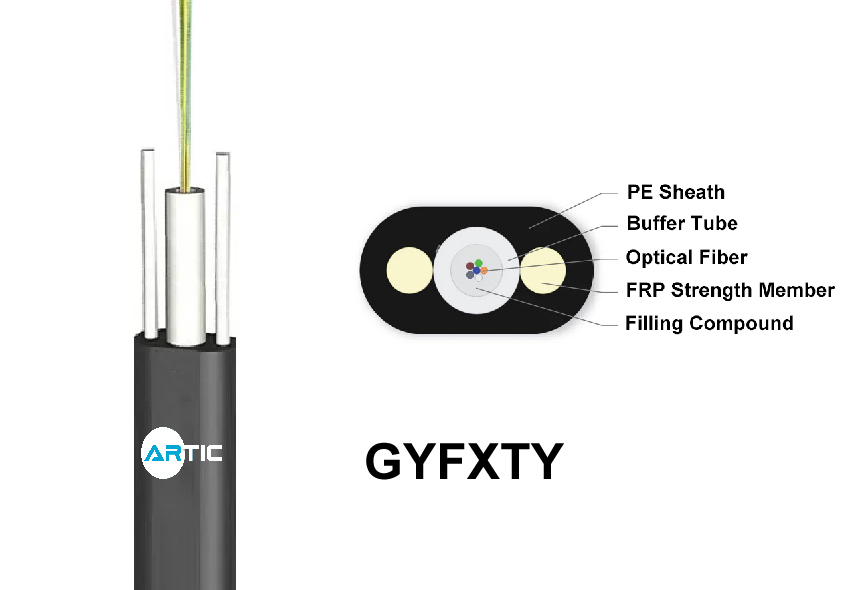
✔ Outer Jacket: Made of polyethylene (PE), which provides excellent protection against moisture, UV radiation, and environmental factors.
✔ Strength Members: Typically includes two parallel fiberglass reinforced plastic (FRP) rods for tensile strength, ensuring the cable can withstand pulling forces during installation.
✔ Loose Tubes: The optical fibers are housed in loose tubes, which are filled with water-blocking gel to prevent moisture ingress.
✔ Fibers: The cable can contain multiple fibers (e.g., 2 to 24 cores or more), depending on the application.
✔ Central Strength Member: Often a steel wire or dielectric material for additional strength and rigidity.
✔ Lightweight and Flexible: Easier to install compared to armored cables.
✔ Water Resistance: The water-blocking gel and tight jacket prevent water penetration.
✔ UV Resistance: The PE jacket is resistant to sunlight, making it suitable for outdoor use.
✔ Non-Metallic: GYFXTY cables are often dielectric (no metal components), making them ideal for areas with lightning risks or electromagnetic interference.
✔ Durability: Designed to withstand harsh environmental conditions, including temperature extremes and mechanical stress.
✔ FTTH (Fiber to the Home): Used in last-mile connectivity to deliver high-speed internet.
✔ Outdoor Networking: Ideal for connecting buildings, campuses, or remote locations.
✔ Aerial Installation: Can be strung between poles for overhead deployment.
✔ Duct and Pipe Installation: Suitable for laying in ducts or conduits.
✔ Lightning-Prone Areas: The dielectric nature makes it safe for use in areas with high lightning activity.

© 2024-2026 ARTIC FIBER OPTIC CO.,LTD. All Rights Reserved.